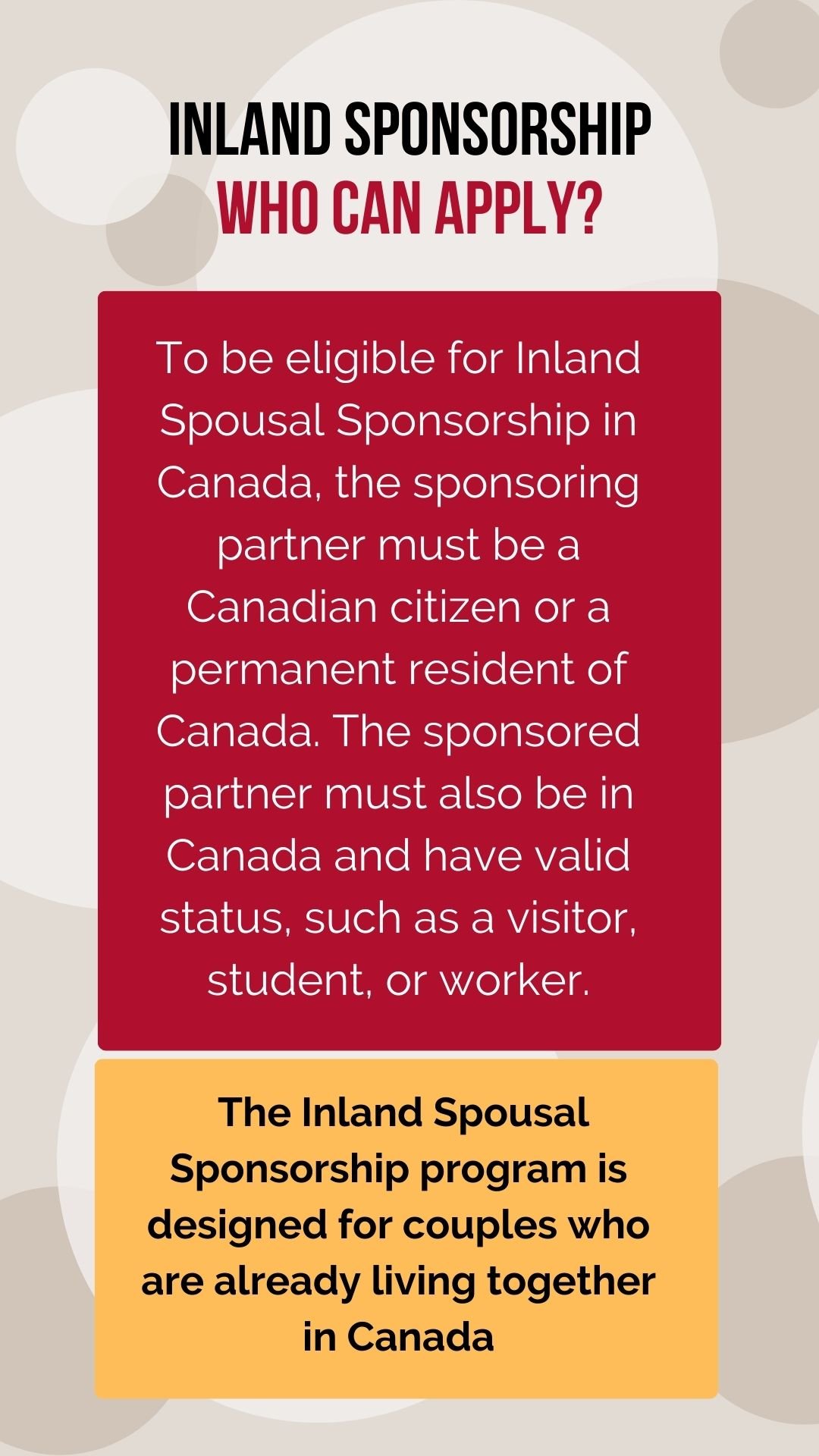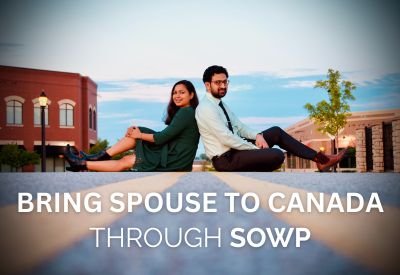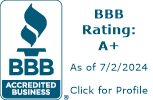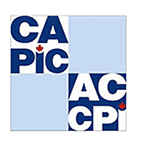Inland Spousal Sponsorship Process
The Inland Spousal Sponsorship process’s steps are summarized below.
Step 1: Determine Spousal Sponsorship Eligibility and Obtain the Application Package
The Canadian sponsor and their spouse must review the eligibility requirements and confirm that they are eligible for this program. They must then obtain the appropriate application packages on the Canadian Government website.
Step 2: Fill Out Forms and Gather the Supporting Documents
The Canadian sponsor and their spouse must then fill out the appropriate forms and gather the relevant supporting documents. This process can take many weeks to complete, so it is best to start it early.
Step 3: Submit the Application
Once the application package is complete, the sponsor must pay the relevant application fees and submit the package to IRCC.
Step 4: Submit Any Additional Documents IRCC Requests
IRCC may then ask the sponsor or their spouse to submit additional documents while their application is being processed.
Step 5: Approval of Sponsorship
If your application is approved, you will receive a sponsorship approval letter. The sponsorship approval letter confirms that you are eligible to sponsor your spouse or common-law partner for permanent residency in Canada. It also indicates that you meet the financial eligibility requirements and that you have met the other necessary criteria to become a sponsor. The sponsorship approval letter is typically issued within 12 months of submitting the sponsorship application.
Step 6: Permanent Residency Application
After the sponsorship approval, your spouse or partner can apply for permanent residency. This involves submitting a separate application along with the required documents and fees.
Step 7: Processing of Permanent Residency Application
IRCC will review your partner’s application and may request additional documents or information.
Step 8: Complete Medical and Background Checks
IRCC asks the spouse to undergo medical and background checks and submit the results. They will then come to a decision after processing the application.
Step 9: Receive a Decision
Once the medical and security checks are complete, your partner will be asked to provide their passport to IRCC to finalize their permanent residency application. The sponsor and their spouse will then receive a decision on whether the permanent resident application has been approved.
Inland Sponsorship Application Processing Time
Application processing time for Inland Spousal Sponsorship in 2023 is approximately 13 months. This includes the time it takes for the Canadian to apply as a sponsor and for the spouse to apply for permanent residence.
Benefits of Inland Spousal Sponsorship
There are many benefits associated with using the Inland Spousal Sponsorship route. This includes:
1. Being Eligible for a Work Permit
Spouses can apply for an open work permit along with their permanent residence application. This allows them to work for any employer in Canada and financially support their Canadian partner while their application is being processed.
2. Being Eligible for Provincial Health Insurance
Spouses become eligible for provincial health insurance once they have held a work permit for a certain amount of time. This means they and their Canadian partner won’t need to worry about expensive hospital bills while their permanent residence application is processed.
3. Getting to Stay in Canada While the Application is Processing
The spouse is allowed to stay in Canada while their application is processed. This means they won’t need to worry about their temporary status expires.
4. Getting to Apply for PR Even if the Spouse’s Temporary Status Has Expired
Spousal sponsorship applicants residing in Canada are in a unique position because they can apply for permanent residence even if their temporary resident status has expired. This is in contrast to other permanent resident programs that prohibit applicants from applying if they have ever resided in Canada under an expired status.
FAQs: Inland Spousal Sponsorship
These are some of the frequently asked questions about Canada’s Inland Spousal Sponsorship:
1. Is the Inland Spousal Sponsorship route different for Quebec residents?
Quebec follows a distinct Inland Spousal Sponsorship route. To use this route, you will need to do the following:
- Meet the Federal Government’s Inland Spousal sponsorship requirements and send IRCC your application.
- Download the Quebec sponsorship kit after obtaining it through an IRCC letter or email
- Submit the Quebec sponsorship kit along with the IRCC email or letter
- If Quebec chooses you as a sponsor, they will send you a Québec Selection Certificate (CSQ)
- IRCC will then send you their final decision on your sponsorship application.
2. Does my spouse need to complete and submit the open work permit application along with their Inland Spousal Sponsorship application if they already have a work permit?
They don’t need to apply for another work permit. However, they should try and maintain legal status in the country while their application is processed. For this reason, they should apply for another work permit if theirs is set to expire soon.
3. Am I allowed to work in Canada as soon as I submit my open work permit and Inland Spousal Sponsorship applications?
No. You will need to wait until you receive your Canadian open work permit before you are allowed to start working in the country.
4. What happens to Inland Spousal Sponsorship applicants without valid temporary status in Canada?
No, unfortunately, you are not allowed to work in Canada as soon as you submit your Open Work Permit (OWP) and Inland Spousal Sponsorship applications. You must wait until your OWP application is approved and you receive the work permit before you can start working in Canada.







